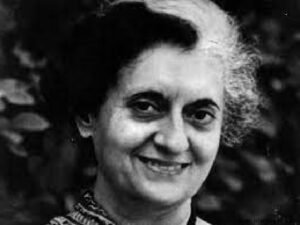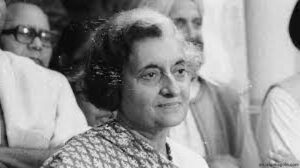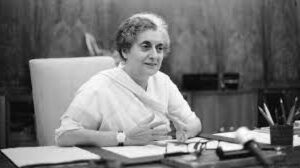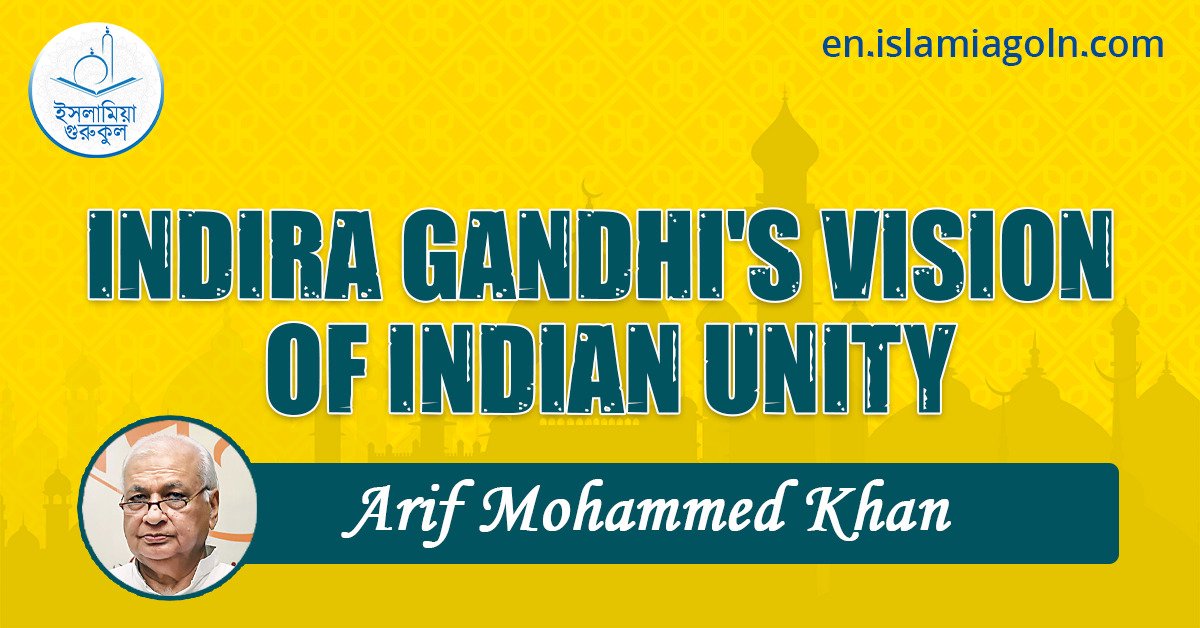Today is our Focus: INDIRA GANDHI’S VISION OF INDIAN UNITY

INDIRA GANDHI’S VISION OF INDIAN UNITY
Delivering a Convocation address at the University of Delhi in 1980, Mrs. Indira Gandhi said:
From the remotest times our diversity has implied acceptance and co-existence. Ancient India believed, as we do, that diversity itself can be a source of strength and that all people should not be confined to a single interpretation of Reality. From the sparkling snows of the Himalayan ranges, the verdant forests of the hills, across the broad plains of the Sindhu and Ganga, came the proclamation of an eternal truth: that Reality is One, but is perceived as many.
I feel, the above reference very concisely defines the national belief and attitude of Mrs. Indira Gandhi who grew in the shade of our freedom movement and later served for more than eleven years as Prime Minister of India. Even a casual study of her speeches, policy initiatives and actions will show that in her dealing with and approaching to various segments of Indians including Muslims, she greatly valued and cherished the features of diversity as parts that add to and strengthen Indian oneness.

It is noticeable that while addressing exclusive community gatherings which she did on several occasions she would not say a word that would give any encouragement or lend credibility to a divisive mindset. Instead she would use every such opportunity to impress the need to appreciate the reality of diverse elements bound together in a common destiny.
In 1980, the Darul Uloom Deoband organized its centenary celebrations coinciding with the completion of 1400 years of the Islamic calendar. On this occasion Mrs. Gandhi reminded her audience that the establishment of Deoband was essentially rooted in the spirit of the Indian national renaissance that arose out of the failed uprising of 1857 She said, ‘Indians came to have a strong realization of their Indianness and resolved to work for their intellectual and political liberation.
There was a great efflorescence of the spirit Thinkers, social reformers, poets and saints of great eminence arose Many new institutions were established. Darul Uloom was one of them. Her comments clearly underline her expectations. She wished Darul Uloom, an Institute of Islamic Studies to remain conscious of its Indian roots and strengthen Indianness.
Again it is noteworthy that while referring to any religious minority, Mrs. Indira Gandhi would never use the term ‘they’ She keenly observed the special charactenstics of individuals and communities but took great care to highlight the similarities.

Talking about religions, she said “Many of the world’s great religions were born in India – Hinduism, Buddhism, Jainism and Sikhism. Others like Zoroastrianism, Christianity and Islam came to us from neighbouring countries. But we have never regarded them as outside religions. We consider Islam very much a religion of India. Over 60 million of our people profess and practice it. Others hold it in highest respect’.
Mrs Indira Gandhi was equally emphatic to highlight Islam as a spiritual and cultural phenomenon rather than a religion professed by the Kings and invaders. She acknowledged and appreciated the ‘interaction between Indian and Islamic thought, influencing and being influenced in practically every branch of human activity in philosophy and matters of spirit, in statecraft and social organization; in art, architecture, music and literature, in mathematics, in medicine and crafts and technologies, indeed in the food we eat, the dress we wear, the very words we speak’.
In Muslim gatherings particularly of scholars, she would not refer to past political glones but always invoked sublime Islamic provisions that prescribe tolerance, peaceful co-existence and respect for other religions. In 1981, inaugurating a seminar she referred to a verse of Quran: ‘To each among you have We prescribed a law and an open way. If God had so willed.
He would have made you a single person. But His plan is to test you in what he has given you. So strive as in a race to do good deed’ After quoting the verse, she asked: ‘Can there be a greater statement of the concept of tolerance, the one virtue which we need above all to save man and the world at this critical juncture’

The impact of Mrs. Indira Gandhi’s personality and her capability to articulate the national agenda had a positive influence even on the opposition parties. Today many political leaders use the term ‘Qaum’ (meaning nation) to describe one or other community instead of using the appropriate terms like Biradri or Samparday and no heckles are raised.
On the other hand when Akali Dal used the same term in Anandpur Saheb Resolution, Mrs Gandhi objected strongly, almost all opposition parties agreed with her and Akali Dal was constrained to explain that the term was used loosely to describe the community, not to assert nationhood.
The political trend of courting divisive elements and demands started after the death of Mrs Gandhi. Mrs Gandhi often remarked that ‘a few fingers held close to the eyes are enough to block the magnificent panorama of the Himalayas’ and the thing she desired most was that we allow nothing to block our view of India, rich in religious, regional, and lingual diversity but one in national aspirations.
See more:

2 thoughts on “INDIRA GANDHI’S VISION OF INDIAN UNITY”